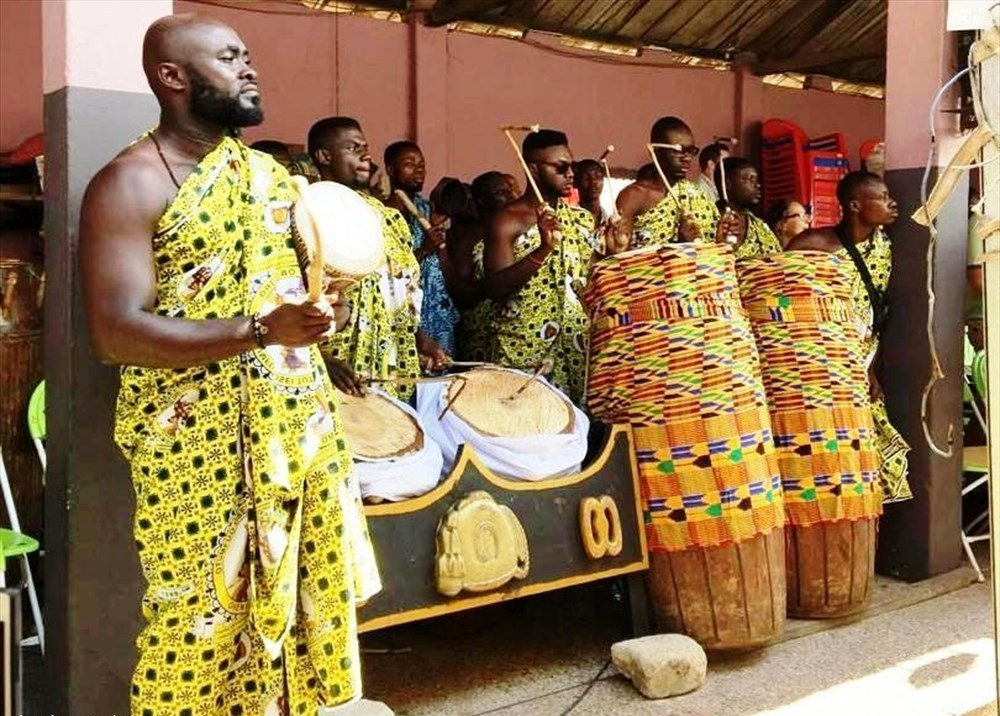
The Akwasidae Festival is one of the most sacred and significant traditional celebrations of the Ashanti people and other Akan ethnic groups in Ghana.
History of the Akwasidae Festival
It honors both the ancestors and the Asantehene (the Ashanti King), reflecting the deep reverence the Akan people have for their ancestors and the importance they place on the connection between the living and the dead.
Akwasidae is part of the larger Adae Festival cycle, observed every six weeks on a Sunday, and follows the 42-day Akan calendar. It alternates with Adae Kese, a grander version of the festival held twice a year.
The festival is deeply rooted in the spiritual beliefs of the Ashanti people, where ancestors, or Nsamanfo, play a crucial role in the well-being and prosperity of the living. It serves as a time to honor the ancestors and seek their blessings, guidance, and protection. It is believed that the ancestors remain present in the lives of their descendants, intervening in matters of health, prosperity, and the welfare of the state.
Thus, Akwasidae functions as a powerful bridge between the living and the dead, reinforcing the importance of maintaining a harmonious relationship with the spiritual world.
How the Akwasidae festival is celebrated
The celebration begins with rituals performed by the Asantehene, chiefs, and elders. A key part of the ritual is the pouring of libation, where prayers and offerings are made to the gods and ancestors at the Sikadwa Kofi, the Golden Stool, which symbolizes the unity and soul of the Ashanti Kingdom.
The day starts with a solemn atmosphere, as it is a time of reflection and spiritual reverence. Traditional leaders, dressed in regalia, gather at the Manhyia Palace to present gifts to the Asantehene, reaffirming their loyalty and respect. The Asantehene, in turn, performs offerings to the Sikadwa and the ancestral stools, representing past Ashanti kings and chiefs. These stools, kept in the royal mausoleum, are considered sacred and must be honored and cared for.
Akwasidae is also a time for the general populace to pay homage to their ancestors, bringing offerings of food and drink to shrines where the spirits of the ancestors are believed to reside. These offerings often include traditional foods like eggs and schnapps, given in gratitude for protection and to ask for continued blessings.
Drumming and dancing play a central role in the celebrations. Fontomfrom drums, considered royal drums, are played to honor the ancestors, accompanied by traditional dances like the Adowa. The drumming and dancing are more than entertainment; they serve as a spiritual connection between the living and their ancestors.

One of the most iconic moments of the Akwasidae Festival is the durbar of chiefs, where the Asantehene sits in state to receive homage from his subjects. The durbar symbolizes the unity and pride of the Ashanti people and serves as a moment of collective celebration of their shared cultural identity.
During the durbar, the Asantehene addresses his people, reflecting on the state of the kingdom and offering guidance for the future. His words carry great weight, as he is seen as a spiritual leader and a symbol of unity. The durbar also provides an opportunity to resolve disputes and reinforce traditional governance.
In addition to the rituals, Akwasidae is a time for celebration and feasting. Families gather to share meals, prepare special dishes, and enjoy communal bonding, reinforcing the importance of family and community in Ashanti culture. Traditional dishes like fufu, yam, and stews are shared with family and neighbors, reflecting the values of generosity and hospitality.


